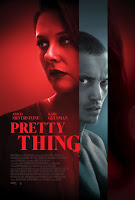the traveler's resource guide to festivals & films
a FestivalTravelNetwork.com site
part of Insider Media llc.
Film and the Arts
July '25 Digital Week III
- Details
- Parent Category: Film and the Arts
- Category: Reviews
- Published on Wednesday, 23 July 2025 22:00
- Written by Kevin Filipski
"Sylvia" Echants With The American Ballet Theater
- Details
- Parent Category: Film and the Arts
- Category: Reviews
- Published on Wednesday, 23 July 2025 13:07
- Written by Jack Angstreich

Carlos Gonzalez in Sylvia. Photo: Nir Arieli.
At the matinee on Saturday, July 12th, at Lincoln Center’s marvelous Metropolitan Opera House, in the final weeks of the current, exemplary season of the extraordinary American Ballet Theater, the company performed one of the greatest works in its repertory, the Frederick Ashton masterpiece, Sylvia, from 1952, set to the wonderful score—it was, apparently, deeply admired by Peter Ilyich Tchaikovsky — by Léo Delibes, who is also famous as the composer of another celebrated ballet, Coppélia, in addition to the lovely opera, Lakmé, especially well-known for its glorious “Flower Duet” and its aria, the “Bell Song.”
Ashton would seem to be—with George Balanchine—the most astonishing choreographer of the 20th century, with an ostensibly boundless originality and creativity evident at every moment in this work. The ballet’s scenario is inspired by the “neoclassical” Aminta by Torquato Tasso, a colossal figure in late Italian Renaissance poetry. The excellent staging is by Susan Jones, with attractive original designs by Robin and Christopher Ironside and additional ones by Peter Farmer. (The effective lighting is by Mark Jonathan.)
The performance I attended had a remarkable primary cast led by Catherine Hurlin who shone brilliantly as the nymph of the title. She was partnered unexpectedly strongly by Calvin Royal III as the shepherd Aminta, here dancing at his seldom seen best. Cory Stearns who has matured laudably as a dancer, was also very fine as the evil hunter Orion. (I did once see this production here—and previously reviewed on this site—indelibly performed by the incomparable trio of Maria Kochetkova, Herman Cornejo and Daniil Simkin in the main roles.)
Striking assistance was provided by the other significant players — Carlos Gonzalez as the god Eros and Virginia Lenssi as the goddess Diana — while the very many other dazzling dancers, particularly in the fabulous series of divertissements in the final act,are unfortunately too numerous to record here. The sterling corps de ballet was, as usual, terrific.
Revisiting this production now, the staging seemed more powerful than my earlier recollection. I look forward to the return of this essential company in the fall of this year.
Classical Review—Gabriel Fauré Recital at the 92 Street Y
- Details
- Parent Category: Film and the Arts
- Category: Reviews
- Published on Tuesday, 22 July 2025 00:36
- Written by Kevin Filipski
 |
| Bell, Duval, Denk, Engstroem and Isserlis performing Fauré’s First Piano Quintet |
(photo: Michael Priest Photography)
July '25 Digital Week II
- Details
- Parent Category: Film and the Arts
- Category: Reviews
- Published on Thursday, 10 July 2025 22:14
- Written by Kevin Filipski
More Articles...
Newsletter Sign Up




















